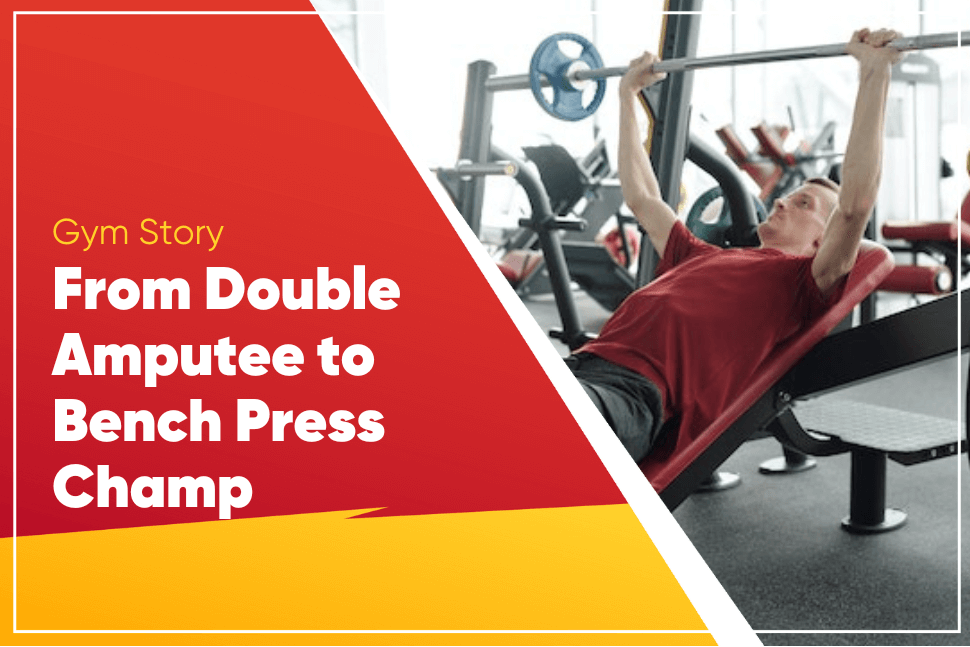When nine-year-old Reg volunteered to help his buddy Pete and his dad bag coal for a school fundraiser, he didn’t realize how exhausting it would be.
Reg ducked between railway wagons, collecting coal lying beside the tracks. He had his sights set on a football-sized brick of coal on the far side of the tracks when something smashed into his tiny body, flattening him to the tracks. His head whacked the cold hard steel and everything went black.
The brakes on one of the wagons had failed, with the wagon rolling back and knocking little Reg to the ground. As he landed head first on the track, his body bounced, throwing his upper body off the track. The heavy axle iron wheels of the wagon ran over his legs at mid-thigh level.
The 212,000-pound weight crushed his legs. Reg would later learn from a doctor that the overwhelming pressure of that wagon on his thighs cauterized the arteries, preventing him from bleeding to death.
Reg woke up in the hospital several hours later. He had a massive headache and it felt like he’d lost a tooth or two. Below his waist, he felt nothing.
His legs were missing.
Before Reg could process what that meant, his mother rushed into the room. Reg could tell that she’d been crying. She told him that she was sorry, that she should never have let him go to the fundraiser, but Reg wasn’t hearing it.
“It’s ok, mum” he said, “I’ll be fine.”
The Power of Positivity
Reg knew that if he was to be fine, as he’d told his mother while he was lying in that hospital bed, he’d have to choose to be fine. He couldn’t do anything about what had happened and he couldn’t get his legs back. But he could choose what he focused on going forward.
It would have been easy for Reg to think about all the things he could no longer do – and the dreams that would never be fulfilled. He wasn’t going to be a football star, or the high school sprint champion. Maybe he wasn’t going to end up with the complete Incredible Hulk physique – but he still had his arms, chest, back and shoulders.
Even at the tender age of nine, Reg determined that he was going to make the most of what he still had, rather than feeling sorry about what had been so cruelly taken from him.
It helped that Reg’s buddies at school treated him just the same as they always had. Within months of being sent home from the hospital, he was climbing trees and wrestling with his buddies during recess. Even though the school authorities initially insisted that he wear artificial limbs to appear ‘normal’, Reg found them too much of a hassle and ditched them in favor of scurrying around on his stumps.
You might expect that a kid with no legs would avoid sports participation at school.
Not Reg.
He threw himself into everything. Reg proved to be a brilliant adapter, figuring out ways to work around his lack of legs to compete with the able bodied kids. He became a competitive swimmer, javelin and discus thrower. When he was twelve he joined a wheelchair basketball team. A year later he was the team captain.
Me & Reg
Reg entered my life in 1999. I’d been a personal trainer for a dozen years, with a decent-sized fitness studio in Tauranga, New Zealand. I worked with people from all walks of life and with all manner of goals, from weight loss to bodybuilding and powerlifting competition.
When Reg wheeled himself into my office, I was immediately struck by his positivity. By now he was 18 and had just graduated from high school. During his school years, he’d racked up a slew of sporting achievements, with quite a few medals. Most of them had been achieved through competition with able-bodied people.
Now Reg was ready to focus on the dream he’d set for himself before his accident – to transform himself into a bodybuilder, just like Lou Ferrigno. I remember something he said to me during that first interview …
I’ve got a lot of mates who are more disabled than I am because they’ve got a bad attitude to life.
Reg the Bodybuilder
Reg and I decided to work together. We’d work out four times per week on a split routine, hitting the pecs, back, bicep, triceps and deltoids twice each per week. For cardio, I had Reg using an upper body ergometer, which is a contraption that you pedal with your hands.
Reg is one of the most disciplined students I’ve ever had. Our workouts were at 6 am, Monday, Tuesday, Thursday and Friday. Every time when I turned up in the morning at 5:45, he’d be waiting outside in his wheelchair, having driven himself down in his customized vehicle.
Even though he’d been competing in strength events such as discus and javelin at school, this was Reg’s first experience with resistance training. His body quickly took to it, and his strength levels increased quickly.
When it came to working the chest, I had Reg doing the dumbbell bench press and the seated cable chest press rather than the barbell bench press. That’s because these versions allow for greater pec range of motion and fiber direction. They are also easier on the shoulder joint than the barbell bench press.
However, I did have Reg bench pressing once per week in order to build up his foundational upper body strength. Being wheelchair-bound, he was unable to perform other compound strength exercises like squats or deadlifts. So the bench press was our go-to strength developer.
For the first six months, I had Reg following a simple descending sets bench press program. We’d start with a 20 rep warm up and then work out way down to 15, 12, 10, 8 and 6 reps. Within three months, he’d gone from benching 80 pounds to 135 pounds. At the six month level he was up 170 pounds.
Reg was pretty pleased to have more than doubled his strength in six months. But he was just getting started.
Reg’s physical development was just as impressive. Within that first six months, he packed on 15 pounds of solid muscle mass. Keep in mind that this guy has no lower body – so all of that 15 pounds was on his upper body. The development of his pecs and delts were especially impressive.
At the same time, I put Reg on a nutritional program designed to build lean muscle mass. It involved eating every three hours to provide his muscles with a constant supply of amino acids for protein synthesis and complex carbs to keep his muscle glycogen up and provide energy for his workouts.
The macro ratio of Reg’s eating program was as follows:
- 55% carbs
- 30% protein
- 15% fats
I’d trained other people who were wheelchair-bound before Reg came along. But no-one was quite like him. In fact, his wheelchair was never part of the training equation. He’d wheel himself onto the gym floor and then hop out to move around by propelling himself forward with his hands.
He could get around that gym floor faster than most able-bodied people. Most wheelchair bound people tend to gain weight because they are not as active as others. But this was never a problem with Reg. His wheelchair use outside of the gym was just as spartan as when he was working out. This helped build strength and muscular endurance in the shoulders and triceps as a result of using them as his primary means of propulsion.
Switching Focus
It was about 18 months into his training that Reg made the decision to set his sights on competition. But not as a bodybuilder. He had decided to focus on powerlifting.
Reg had been making good progress in bodybuilding. By the time he turned 20, he was on track to realize his boyhood ambition of possessing an Incredible hulk-like adult body – sans the legs of course. But the desire to compete on stage wasn’t part of the equation.
Reg’s bench press progress was as promising as ever. We’d been setting PR targets every six months, and hitting every single one of them. The goal was to hit 275 pounds on his 20th birthday. When he reached it a week ahead of schedule he announced his intention to compete as a powerlifter.
Reg the Powerlifter
When it comes to Paralympic powerlifting, there is only one discipline: the bench press.
The competitor lies on a specially made bench and unracks the bar. Upon receiving a start signal, the athlete then lowers the bar to the chest. The bar is then held motionless until the ‘rack’ signal is given, at which time the bar is pressed to arm’s length with locked elbows.
Each athlete has three attempts at the given weight.
Having established our competitive target, we began to get serious about our training program. We trained through a series of mesocycles, each of which were 12 weeks long, leading to the day of competition. Each mesocycle involved doing three workouts per week, on Monday, Wednesday and Friday. Intensity varied as follows:
- Monday: Heavy
- Wednesday: Medium
- Friday: Light
The workouts included auxiliary exercises that were done to improve Reg’s bench press. Here’s a breakdown of the weekly workouts:
Monday:
Bench Press: 7 x 10/8/6/4/3/3/1
Dumbbell Flyes: 3 x 12
Lying Triceps Extension (Barbell): 3 x 8-12
Dumbbell Row: 3 x 12
Wednesday:
Bench Press: 5 x 12/10/8/6/6
Incline Dumbbell Press: 3 x 8
Lat Pulldown: 3 x 12
Tricep Pushdown: 3 x 12
Friday:
Bench Press: 5 x 20/15/12/10/8
Dumbbell Flyes: 3 x 12
Lying Triceps Extension (Barbell): 3 x 8-12
Dumbbell Row: 3 x 12
Reg was laser focused on his training and his nutrition for his first powerlifting competition. He was completely zoned in on the 2001 North Island Powerlifting Championship in Hamilton on June 23rd.
We entered him in the 65 kg class.
Prior to the competition, I took Reg to a local show to get him familiar with what took place on the potentially stressful day of the show. These were able-bodied shows and I could tell that Reg was pumped to get up there and show what he could do.
Reg the Champion
We arrived early on the day of the show. After signing in and registering for his drug test, Reg got on the official competition bench to check the rack adjustments for his size.
There were four guys in that weight class. Reg competed last.
The main competition turned out to be a guy from the South Island who was in his mid-30s. He posted a first lift of 135 kg (297.6 lbs), getting it on his first attempt.
Our strategy going in was to choose an opening weight that Reg could do for 3 reps. That number was (140 kg) ( 310 lbs). So that’s what we went with.
And my man nailed it first pop.
That put Reg in the lead after the first round. For the second round, we went with 145 kg (320 lbs), which Reg had hit for doubles in training. Again he got it on the first attempt. The South Island guy had gone with the same weight. He’d missed his first but nailed it on his second attempt.
So now it was all down to the final attempt. The South Island guy selected 150 kg (331 lbs). When Reg watched him wheel his way to the bench, he turned to me and said, “ I’m doing 152.” 150 kg was Reg’s personal best and it was the number we’d agreed upon. But if this guy nailed that weight, we had to go beyond our previous best.
The South Island guy missed his first attempt. Getting it three-quarters of the way but not able to lock out. But then he came back and just managed to blast through the sticking point and lock out for three green lights.
When I looked across at Reg, I saw nothing but determination in his eyes.
This was his moment.
Before I knew what was happening, Reg had leaped out of his wheelchair and was scurrying across the floor to the competition bench. He propelled himself onto the bench and set himself for the job at hand.
With more weight loaded on the bar than he’d ever lifted before, Reg unracked the bar. He slowly lowered it to his chest and then waited for the call. I held my breath, not sure what would happen next – this was uncharted territory.
On the call to re rack the bar, Reg went into action. Like a piston driving inexorably skyward, he drove the weight to arm’s length with more ease than I’d ever seen him do a single rep lift.
The kid who’d lost his legs in a tragic train accident was now the North Island powerlifting champ. Four months later he won the national championship, a title he defended for three years running.
And even though he has never stood on a Bodybuilding stage, Reg has also managed to build an upper body that was Incredible Hulk worthy – just like he dreamed all those years ago while collecting coal.
 Gym Owner Statistics: The State of Gyms, Member Trends, and Usage Data
Gym Owner Statistics: The State of Gyms, Member Trends, and Usage Data



